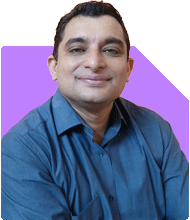71 and Seeking Security: Can I Generate 2 Lac Monthly from Mutual Funds?
Ramalingam Kalirajan |7051 Answers |Ask -Follow
Mutual Funds, Financial Planning Expert - Answered on Nov 19, 2024
He has an MBA in finance from the University of Madras and is a certified financial planner.
He is the director and chief financial planner at Holistic Investment, a Chennai-based firm that offers financial planning and wealth management advice.... more

I am 71 years old.My investment in Mutual funds is 70 lac (lumpsum)and Rs 40000 per month.I have a partnership business from where I draw around 2 lac per month.How can I have around 2 lac per month from MF so that I feel safer and securer
Understanding Your Current Situation
Existing Mutual Fund Investments: Rs. 70 lakh in lump sum and Rs. 40,000 monthly SIP are commendable.
Business Income: Drawing Rs. 2 lakh monthly from your partnership adds stability.
Primary Goal: Generating Rs. 2 lakh monthly from mutual funds while ensuring financial safety.
Key Recommendations for Generating Regular Income
1. Use Systematic Withdrawal Plans (SWP) for Consistent Cash Flow
SWPs offer a fixed monthly withdrawal from mutual funds.
They allow you to continue investing while receiving regular income.
Choose equity and hybrid mutual funds for a balanced risk-reward ratio.
Select a withdrawal amount less than the expected returns to preserve capital.
2. Diversify Across Fund Types for Stability
Maintain a mix of equity, hybrid, and debt funds for portfolio balance.
Equity funds provide growth potential. Hybrid funds offer moderate risk. Debt funds ensure safety.
This diversification reduces dependence on any one fund type.
3. Rebalance Your Portfolio Periodically
Market fluctuations can shift asset allocation.
Review your portfolio every six months to ensure proper balance.
Increase debt fund allocation as you age to reduce risks.
4. Evaluate Tax Implications for Withdrawal
Equity fund LTCG above Rs. 1.25 lakh is taxed at 12.5%.
STCG is taxed at 20%.
Debt fund gains are taxed as per your income slab.
Plan withdrawals to minimize tax impact.
5. Avoid Overdependence on Business Income
Business income may fluctuate or reduce over time.
Mutual funds can bridge any income gaps as a reliable alternative.
6. Maintain an Emergency Corpus
Set aside Rs. 10–15 lakh in a liquid fund for emergencies.
Ensure quick access during unforeseen situations.
7. Avoid Index and Direct Funds for Income Goals
Index funds lack active management, affecting returns during volatility.
Direct funds can complicate tracking and require extensive research.
Instead, prefer regular plans through a certified financial planner (CFP) for expert management.
8. Evaluate Insurance Needs
Ensure adequate health insurance coverage for medical emergencies.
Avoid investment-linked insurance policies like ULIPs.
Focus solely on standalone insurance products.
9. Plan for Inflation Protection
Adjust your withdrawal strategy to account for rising costs.
Reinvest surplus returns into equity or hybrid funds for growth.
Additional Suggestions for Enhanced Safety
1. Regular Income Options within Mutual Funds
Hybrid funds can provide steady returns with low volatility.
Monthly income plans (MIPs) offer consistent payouts.
2. Focus on Legacy Planning
Consider your family’s future needs while planning withdrawals.
Maintain a will and nominate beneficiaries for your investments.
3. Periodic Review with a Certified Financial Planner
Engage with a CFP to reassess your portfolio regularly.
A CFP can help align your investments with your evolving goals.
Final Insights
Your financial position is strong, and your goal of Rs. 2 lakh monthly from mutual funds is achievable. By using SWPs, diversifying investments, and rebalancing periodically, you can secure regular income without compromising capital. Stay focused on disciplined planning and professional guidance for long-term financial safety.
Best Regards,
K. Ramalingam, MBA, CFP,
Chief Financial Planner,
www.holisticinvestment.in
https://www.youtube.com/@HolisticInvestment
You may like to see similar questions and answers below
Kirtan A Shah | Answer |Ask -Follow
MF Expert, Financial Planner - Answered on Sep 02, 2023
Vivek Lala |301 Answers |Ask -Follow
Tax, MF Expert - Answered on Jan 23, 2024
Ramalingam Kalirajan |7051 Answers |Ask -Follow
Mutual Funds, Financial Planning Expert - Answered on May 06, 2024
Ramalingam Kalirajan |7051 Answers |Ask -Follow
Mutual Funds, Financial Planning Expert - Answered on May 15, 2024
Ramalingam Kalirajan |7051 Answers |Ask -Follow
Mutual Funds, Financial Planning Expert - Answered on Jul 22, 2024
Milind Vadjikar |659 Answers |Ask -Follow
Insurance, Stocks, MF, PF Expert - Answered on Nov 19, 2024
Milind Vadjikar |659 Answers |Ask -Follow
Insurance, Stocks, MF, PF Expert - Answered on Nov 19, 2024
Prof Suvasish Mukhopadhyay |122 Answers |Ask -Follow
Career Counsellor - Answered on Nov 19, 2024
Prof Suvasish Mukhopadhyay |122 Answers |Ask -Follow
Career Counsellor - Answered on Nov 19, 2024
Prof Suvasish Mukhopadhyay |122 Answers |Ask -Follow
Career Counsellor - Answered on Nov 19, 2024
Dr Shakeeb Ahmed Khan |125 Answers |Ask -Follow
Physiotherapist - Answered on Nov 19, 2024
Ramalingam Kalirajan |7051 Answers |Ask -Follow
Mutual Funds, Financial Planning Expert - Answered on Nov 19, 2024
Ramalingam Kalirajan |7051 Answers |Ask -Follow
Mutual Funds, Financial Planning Expert - Answered on Nov 19, 2024
Anu Krishna |1308 Answers |Ask -Follow
Relationships Expert, Mind Coach - Answered on Nov 19, 2024
























.jpg)


